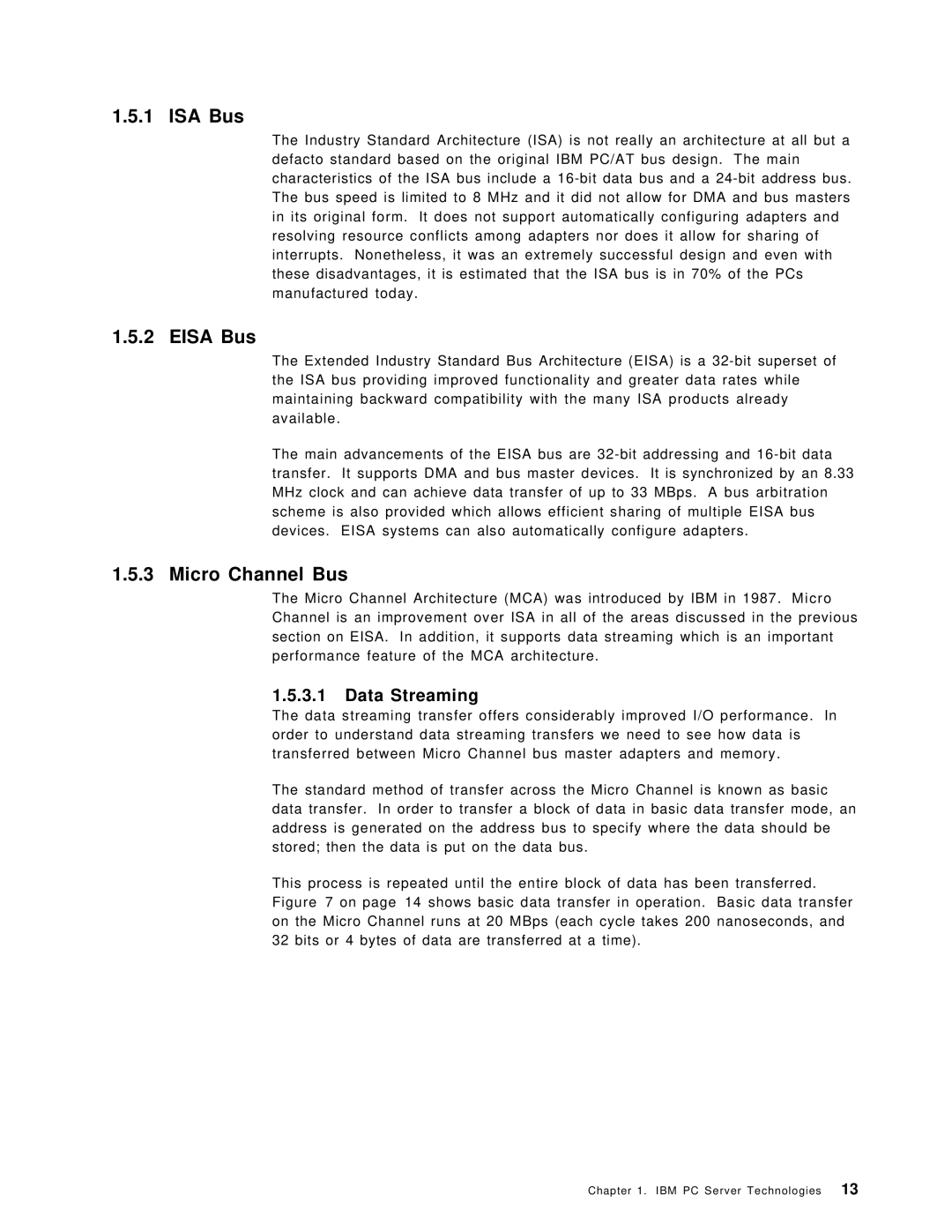1.5.1 ISA Bus
The Industry Standard Architecture (ISA) is not really an architecture at all but a defacto standard based on the original IBM PC/AT bus design. The main characteristics of the ISA bus include a
1.5.2 EISA Bus
The Extended Industry Standard Bus Architecture (EISA) is a
The main advancements of the EISA bus are
1.5.3 Micro Channel Bus
The Micro Channel Architecture (MCA) was introduced by IBM in 1987. Micro Channel is an improvement over ISA in all of the areas discussed in the previous section on EISA. In addition, it supports data streaming which is an important performance feature of the MCA architecture.
1.5.3.1Data Streaming
The data streaming transfer offers considerably improved I/O performance. In order to understand data streaming transfers we need to see how data is transferred between Micro Channel bus master adapters and memory.
The standard method of transfer across the Micro Channel is known as basic data transfer. In order to transfer a block of data in basic data transfer mode, an address is generated on the address bus to specify where the data should be stored; then the data is put on the data bus.
This process is repeated until the entire block of data has been transferred. Figure 7 on page 14 shows basic data transfer in operation. Basic data transfer on the Micro Channel runs at 20 MBps (each cycle takes 200 nanoseconds, and 32 bits or 4 bytes of data are transferred at a time).
Chapter 1. IBM PC Server Technologies 13
